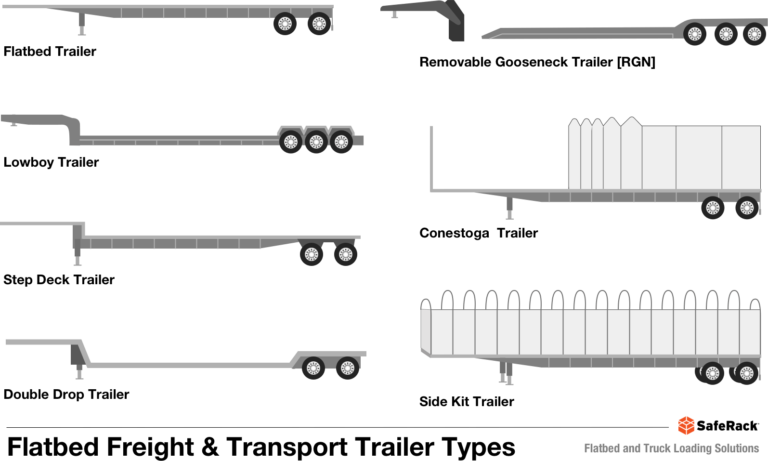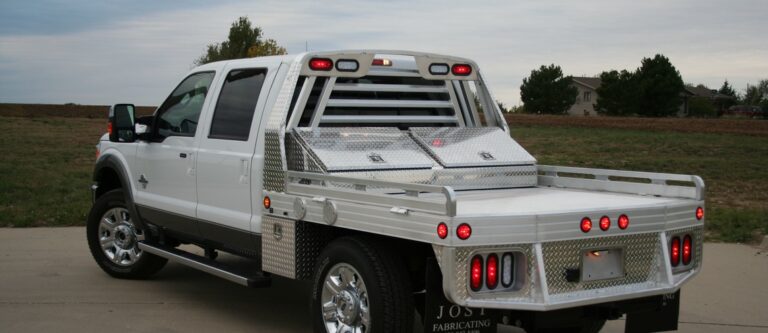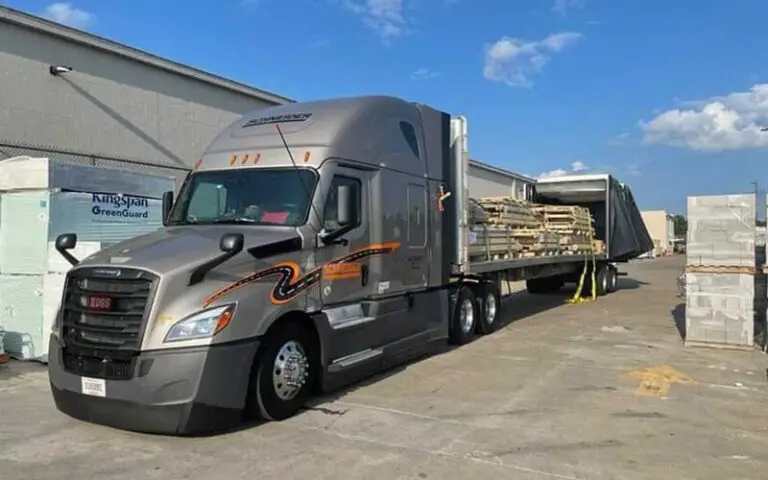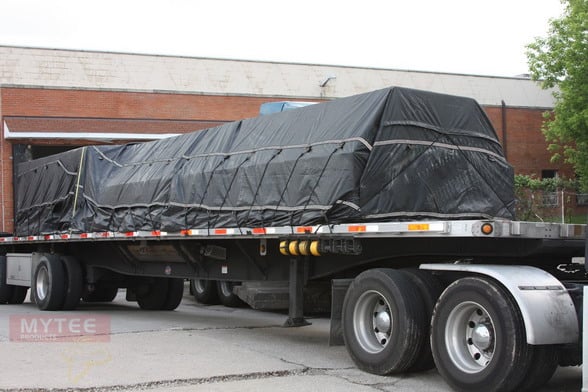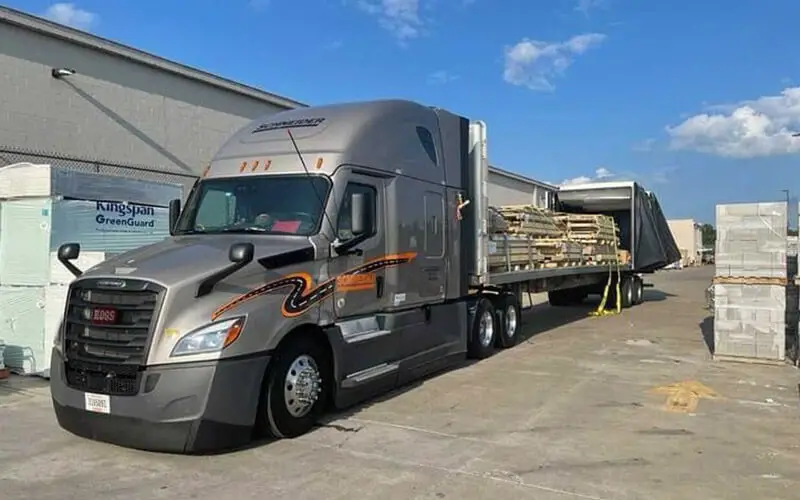
Becoming a flatbed truck driver requires obtaining a commercial driver’s license (CDL) and completing specialized training. To get started, research truck driving schools, enroll in a CDL training program, and gain experience by working for a trucking company.
Embarking on a career as a flatbed truck driver can be a rewarding venture for individuals seeking an exciting and dynamic occupation in the transportation industry.
To begin this journey, aspiring drivers must obtain a commercial driver’s license (CDL) and undergo specialized training that focuses on flatbed truck driving.
This may involve researching reputable truck driving schools, enrolling in a comprehensive CDL training program, and gaining invaluable experience by working for a reputable trucking company.
By following these steps, individuals can set themselves on the path to becoming successful flatbed truck drivers.
Follow my blog with BloglovinNavigate As You Want: [show]
Understanding The Flatbed Trucking Industry
Being a flatbed truck driver can be a rewarding career choice. With the understanding of the flatbed trucking industry, you can embark on a journey that offers plenty of opportunities.
Flatbed trucking involves transporting freight that cannot fit in a standard enclosed trailer. This specialized type of trucking has its own unique set of challenges and benefits.
What is Flatbed Trucking?

It is a form of trucking that involves hauling oversized or unconventional cargo. Flatbed trailers have no sides or roof, allowing for easy loading and unloading of goods.
This sector of the trucking industry is essential for transporting goods like construction materials, machinery, and large equipment. The demand for flatbed truck drivers is constantly growing, as industries rely on them to transport their freight securely and efficiently.
Benefits of Becoming a Flatbed Truck Driver
The benefits of becoming a flatbed truck driver include the potential for higher pay, job security, and the opportunity for independence.
Flatbed truck drivers often earn more compared to their counterparts in other trucking sectors. The nature of the job requires specialized skills, and this can lead to better wages.
Additionally, the need for flatbed truck drivers continues to be high, ensuring job security in a competitive job market.
Furthermore, flatbed truck drivers often have more freedom and flexibility in their schedule, allowing them to enjoy a sense of independence in their work.
So, if you’re interested in a career that offers challenges, growth, and rewards, consider becoming a flatbed truck driver. Start by gaining a solid understanding of the flatbed trucking industry and seize the opportunities that come with it!

Requirements And Qualifications
To become a flatbed truck driver, you must have a Commercial Driver’s License (CDL). This involves passing written and practical tests. The age requirement for CDL varies by state but is typically 18 or 21. As for physical requirements, you need to meet certain health and vision standards.
Driving experience is crucial, and many employers prefer candidates with at least one year of experience. Special certifications such as hazardous materials (Hazmat) endorsement and TWIC card may also be required depending on the type of freight you’ll be hauling.
Training And Education
If you’re interested in becoming a flatbed truck driver, comprehensive training and education are essential. Learn the necessary skills and regulations for secure and efficient flatbed transportation through specialized programs and certifications. Start your journey today!
Becoming a Flatbed Truck Driver requires proper training and education. One way to achieve this is through completing a CDL training program. These programs provide the knowledge and skills necessary to safely operate a flatbed truck.
Additionally, enrolling in flatbed trucking courses can further enhance your understanding of the specific requirements of this type of trucking. Moreover, gaining valuable on-the-job training can provide practical experience and insight into the daily demands of the job.
Flatbed Trucking Safety And Regulations
Being a flatbed truck driver requires a strong understanding and adherence to safety regulations. Load securement is a critical aspect of flatbed trucking to ensure the safe transportation of goods.
The Department of Transportation (DOT) has specific regulations in place to govern load securement. Truck drivers must comply with these regulations to prevent accidents and hazards on the road.
Flatbed truck drivers need to use proper safety equipment such as straps, chains, and binders to secure the cargo effectively. Regular inspections are crucial to identify any potential issues and make necessary adjustments to maintain load stability.
Following safety practices, such as evenly spreading the weight of the cargo, can help prevent shifting during transport.
Truck drivers must prioritize safety and continuously stay updated on regulations, equipment, and practices to become successful flatbed truck drivers.
Finding Employment As A Flatbed Truck Driver
Finding employment as a flatbed truck driver, several job search strategies can help you secure a position in this industry.
First and foremost, networking and industry connections can be invaluable resources in your job search. Reach out to other truck drivers, attend industry events, and join online trucking communities to expand your network and discover potential job opportunities.
Applying to trucking companies directly is another effective approach. Research trucking companies that hire flatbed truck drivers and submit your application along with a well-crafted resume. Highlight your experience, skills, and certifications relevant to the job.
When it comes to the interview process, it’s important to prepare and impress the hiring manager.
Research the company beforehand and come up with thoughtful questions to ask during the interview. Dress professionally, maintain good eye contact, and demonstrate your enthusiasm and dedication for the job.
Remember, finding employment as a flatbed truck driver requires a proactive approach. Utilize your network, apply to trucking companies directly, and demonstrate your value during the interview process.
By following these strategies, you’ll be on your way to a successful career as a flatbed truck driver.

Frequently Asked Questions
How Long Does It Take To Become A Flatbed Truck Driver?
Becoming a flatbed truck driver typically takes a few weeks to a few months, depending on the individual’s prior experience and the training program they choose.
Some programs offer accelerated courses that can be completed in as little as two or three weeks, while others may take several months to complete.
What Qualifications Do I Need To Become A Flatbed Truck Driver?
To become a flatbed truck driver, you will need a valid commercial driver’s license (CDL) with the appropriate endorsements for operating a flatbed truck.
Additionally, most employers require a clean driving record, a certain amount of driving experience, and the ability to pass a physical exam and drug test.
What Kind Of Training Is Required To Become A Flatbed Truck Driver?
To become a flatbed truck driver, you will need to complete a CDL training program that covers the skills and knowledge necessary for operating a flatbed truck safely.
This training typically includes classroom instruction and hands-on practice with flatbed trucks, as well as preparation for the CDL written and skills tests.
How Much Can I Earn As A Flatbed Truck Driver?
The earnings of a flatbed truck driver can vary depending on factors such as experience, location, and the company they work for. On average, flatbed truck drivers earn a competitive salary, with some drivers earning over $70,000 per year.
Additionally, many companies offer benefits such as health insurance, retirement plans, and paid time off.
Conclusion
Becoming a flatbed truck driver requires dedication, training, and meeting the requirements. By following the steps outlined in this guide, you can embark on a rewarding career in the trucking industry.
From obtaining the appropriate license to gaining experience, being a flatbed truck driver offers numerous opportunities for growth and advancement.
Remember to stay updated on industry regulations, maintain a strong work ethic, and prioritize safety at all times. Start your journey to becoming a successful flatbed truck driver today!
